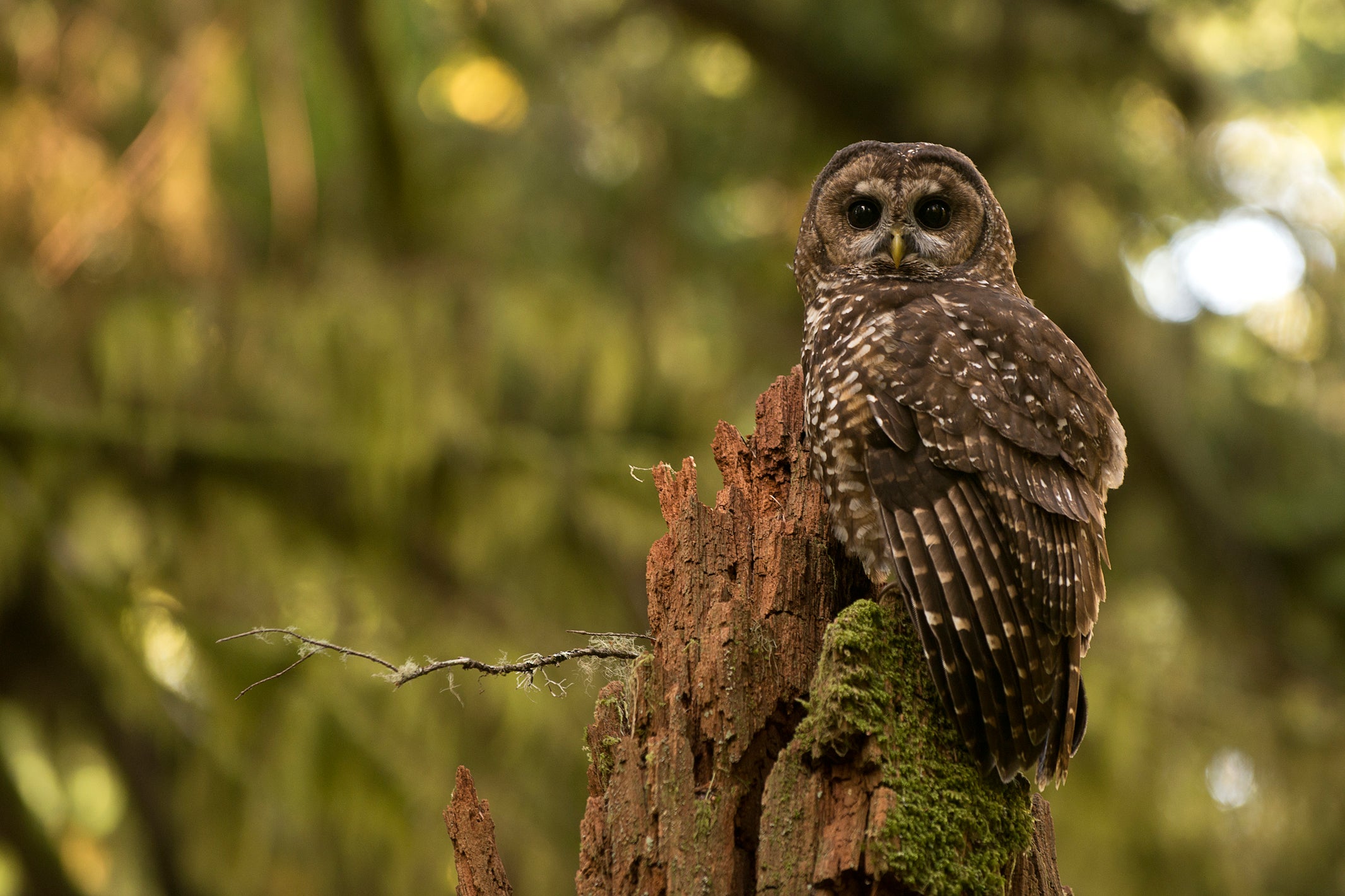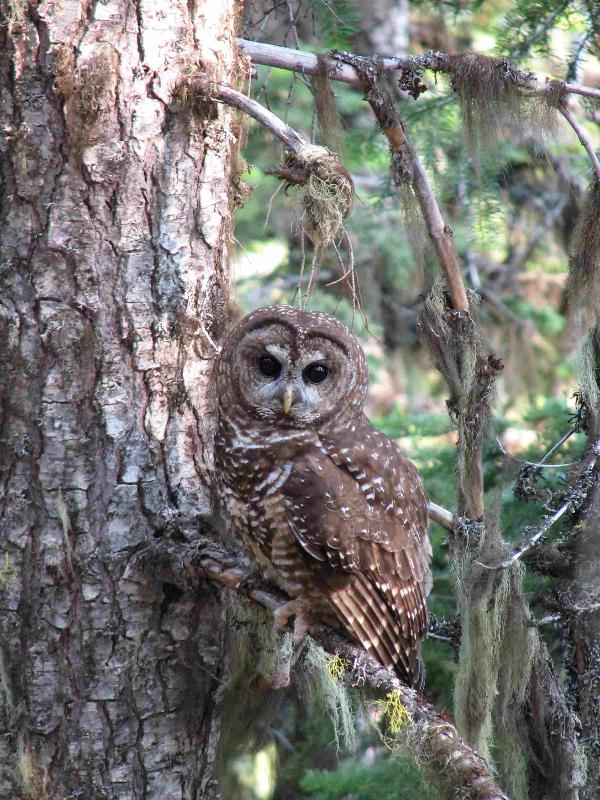The Trump administration’s multi-agency hiring freeze could impact efforts to prevent the imperiled northern spotted owls from “sliding into extinction,” an environmental group said this week.
Without regional monitoring of the birds, the Center for Biological Diversity said conservation agencies would be left without crucial information about the species.
That monitoring to track the species and ensure it’s not under assault by other creatures is often done by federal employees and helps keep the species alive. It could be threatened by President Donald Trump and his right-hand man Elon Musk as they push to freeze government hiring and axe thousands from the federal payroll.
“This assault by Trump and Musk on the civil servants who help save endangered species across the country is just beginning to rear its ugly head, and spotted owls could be their first victim,” Noah Greenwald, the center’s endangered species director, said in a statement.
“As a former seasonal spotted owl surveyor myself, I know first-hand how important keeping track of these inquisitive birds is to their survival. Decades of work [have] gone into ensuring the owls aren’t harmed by logging on our public lands. If we can’t do the surveys, the logging may need to stop,” he added.

“Just a few days ago, 3,400 people were fired from the U.S. Forest Service. The U.S. Forest Service is the agency that has the biggest stake in helping to protect northern spotted owls. And, in a few weeks, there’s going to be a public comment due on the Northwest Forest Plan Amendment. And, without staff there … there’s going to be a shortage of people on the ground to actually do that work that needs to be done to protect the owl,” Bird Alliance of Oregon Director of Statewide Conservation Joe Liebezeit told The Independent on Friday.
Once abundant in forests with mild climates throughout the West, the whooping owl’s loss of habitat – largely thanks to logging – led to its listing as a federally threatened species in 1990. Just over a decade later, the invasive barred owl began to occupy the region and also pose a hazard to the northern spotted owls through competition and interbreeding. Barred owls are bigger and more aggressive.
Climate change is also a threat to the owls, creating favorable conditions for the barred owl and other invasive species.
Notably, northern spotted owls only start breeding between the ages of two and five years old. They don’t reproduce each year and only have up to two chicks when they do.
As of three years ago, the U.S. Forest Service had estimated there were just between 3,000 and 5,200 of the white-flecked birds left on federal lands.
The Audubon Society said then that populations in Northern California and the Pacific Northwest’s old-growth conifer forests had shrunk by at least 65 percent between 1995 and 2018.
In Mount Rainier National Park they declined by nearly 75 percent between 1995 and 2017, with just 18 territorial adults found across over 80,000 acres of habitat.
“The populations are really at a tipping point right now,” Alan Franklin, a research scientist with the U.S. Department of Agriculture’s National Wildlife Research Center, told the non-profit. “Something has to be done quickly.”
The owls are considered to be an indicator species that help to determine the health of a forest ecosystem. By monitoring the owls, land managers can not only minimize current disturbances to nest sites but plan future conservation efforts. Mount Rainier National Park has been monitoring northern spotted owls annually since 1997.

The center notes that monitoring the spotted owl is required by the Northwest Forest Plan and the U.S. Bureau of Land Management’s western Oregon plan revision, and that timber sale and fuels reduction projects in the agencies are dependent upon monitoring the owls.
While monitoring has been streamlined through the use of acoustic recorders, seasonal field workers are needed to place these recorders on the landscape.
Hiring for these roles would typically happen before the spring and summer.
“We need this data every year to ensure that our efforts to protect these owls and the old forests they depend on are succeeding,” Dr. Taal Levi, an associate professor of wildlife biology at Oregon State University and a collaborator on the spotted owl monitoring project, said in a statement.
“You need people to do the work of surveys and monitoring and other types of management actions to help the owl recover. And, with this massive shortage of people that we’re seeing – and this could just be the first round of cuts – it’s really, really, deeply concerning,” Liebezeit said.












